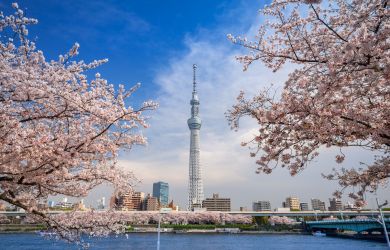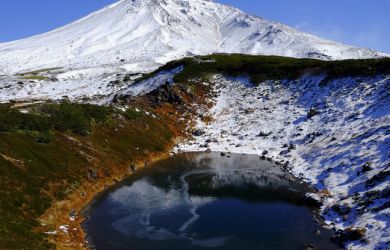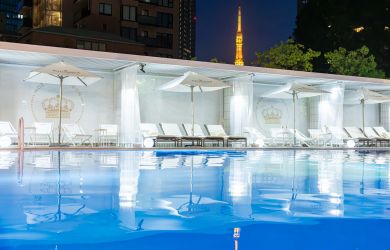
Originally published on metropolis.co.jp on July 2011

Whether peeking into the steaming abyss of an active volcano or hiking along the ridge of a deep caldera created millions of years ago by nature’s forces, Japan’s volcanic landscapes offer fascinating vistas to those who dare to venture into this moon-like landscape of bare rocks and wide-open space. Japan hosts ten percent of the world’s volcanoes and there are said to be two hundred scattered across the islands. A prominent location for close-up volcano discoveries is Kyushu Island.

Yufu-dake
Towering tall above Yufuin, a small onsen town in the northeast of Kyushu, are the two 1,500m-plus peaks of Yufu-dake. Dormant for a long time, the slopes of this volcano are overgrown with grass and shrubs which makes for an easy, introductory volcano hike between wallowing in one of the area’s old hot-spring baths and exploring Yufuin’s many craft shops, galleries and cafes.
Access: Train from JR Fukuoka to Yufuin, then a 10 min ride by taxi. Alternatively, bus from JR Beppu to Yufu-Tozan-Guchi (trail entry point).
Naka-dake (Aso-san)
A nauseous sulphur smell hangs in the air around Mount Naka, one of Aso’s five volcanic peaks, which continuously spews poisonous gas and occasionally also erupts. Good weather conditions provided, visitors are allowed to walk up to the rim of the crater to sneak a peek at the bubbling hot matter, obscured by heavy clouds of smoke. This is the closest you can get to an active volcano in Japan. Scientific-minded travelers might want to stop by at the nearby Aso Volcano Museum.
Access: Take JR Hohi line limited express from Beppu to Aso, then a bus to the plateau of Mt. Naka.

Kirishima
This area boasts no less than 23 volcanoes, 15 craters and 10 crater lakes—a paradise for volcano otaku. Walk from Ebino Kogen highlands along a ridge that connects several volcanic peaks. From there you have panoramic views of several crater lakes, filled with cobalt-blue waters or with a strange metallic-green liquid. The peak of Takachiho, where a massive metal sword is rammed into the ground, is considered to be sacred. According to Japanese legend, the grandson of sun goddess Amaterasu descended to earth here to found the Japanese nation. This no-man’s land of red and black volcanic rock was deemed remote enough to hide the bad guys in the 1967 James Bond movie You Only Live Twice. Check out Kirishima Jingu shrine and Sakura Sakura Onsen, whose specialty is a gray volcanic mud bath said to do wonders for your pale, city-slicker skin.
Access: Take JR Kyushu Nippo main line from Kagoshima to Miyazaki, then local buses.
Kaimon-dake
The “Fuji of Satsuma,” near Kagoshima Bay, is three-times smaller than its famous namesake but climbing this tree-covered cone is not without its perils. A funny-looking but seriously intended police announcement warns hikers not to underestimate this hike that leads in a spiral to the summit. On your way up enjoy splendid views of the coastline on one side and of Lake Ikeda on the other. At the end of the day, treat yourself to a visit to the open-air hot sand “bath” in Ibusuki where, right at the beach, you get buried up to your neck in piping hot volcanic sand.
Access: Take the JR Kagoshima-Makurazaki line from Kaimon to Ibusuki.
Sakurajima
The three rocky peaks of Sakurajima make for dramatic scenery—and keep the locals on constant alert. This volcano on the island of the same name is notorious for its outbreaks that regularly cover the area in ash. Ride on the sightseeing bus, or alternatively, on a rented bicycle around the island and discover colonies of fishing boats in hidden bays, or bizarrely-shaped massive rocks on old lava fields. The world’s largest radish and smallest mandarin grow here. The must-go hot spring here is Furusato Onsen. Its outdoor bath right by the ocean also serves as a shrine to a local god, which is why all bathers wear a white yukata.
Access: Sakurajima Ferry links Kagoshima Port and Sakurajima Port






